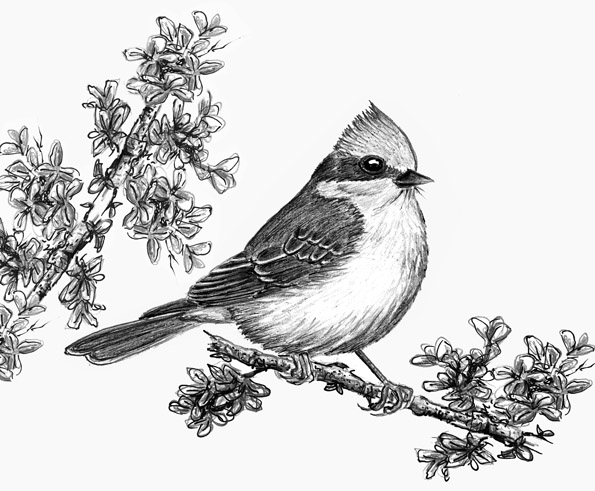
Dear Bird Folks,
Last week you wrote a column about the differences between swallows and flycatchers. In the column you stated that flycatchers are “dull-plumaged” birds. Well, I’ve just returned from a trip to southern Arizona where I saw several Vermillion Flycatchers. Vermillion Flycatchers are bright red birds and are not at all dull. I just thought I’d point that out.
– David, Sandwich, MA
Hold on, Davey,
Who are you, the Bird Folks Police, looking for the slightest flaw in an otherwise perfectly written composition? I appreciate that you read our column and have taken the time to write, but I’m pretty sure if you read the entire sentence you’ll notice that I prefaced that statement about dull-plumaged flycatchers with the words, “with a few notable exceptions.” I really did. Take a look. See? Now I have a question for you. How could you go birding in Arizona in the middle of this scorching summer? Didn’t the crippling heat bother you? What are you made of, asbestos? I’ve been to AZ in the beginning of February, and even then it was way too hot for me. After a few days of birding in the desert heat, I had to get away and drove up to Las Vegas, because I’ve heard everything was cooler there. The rumors turned out to be true. Everything was cooler in Vegas. Although, I did see some showgirls who were pretty hot, but that’s a story for another time.
Of the 400-plus species of flycatchers found in the New World, many of them are indeed rather plain looking. Only the hardcore birders waste their time trying to sort out those bland birds. But, as you have noted, the male Vermillion Flycatcher is an exception to this rule. Instead of blending into the background, this striking bird is so showy that it would stand out in a busload of peacocks. Vermillion is the perfect name for it. The male is half black and half red-orange, and I’m not talking about regular red-orange. It’s a shocking red-orange, making the flycatcher look like a cross between a Scarlet Tanager and a traffic cone.
If the flashy coloring of the males is not enough to attract a mate, and it should be, they also have an impressive courting flight that no lady could possibly ignore. During courtship the males puff up their fluorescent feathers and float high above the treetops, appearing to move with the wind, almost butterfly-like. It’s quite the show, nearly as good as the fan dancers in Vegas. Oh, right. I wasn’t going to talk about them.
As is the case with many birds, the female flycatchers are not nearly as colorful as their male counterparts. They are mostly boring brown. Some human females complain that it’s not fair that the male birds get all the color, while the females are often drab. But I think the birds prefer it that way. Vermillion Flycatchers nest in a fairly open area. It’s difficult for an incubating female to hide from roaming predators, but it would be nearly impossible to hide detection if she had the coloring of, say, a traffic cone.
Since you apparently studied last week’s column very carefully, Dave, you probably noticed that I mentioned that swallows are very sociable birds. Some swallow flocks may number in the thousands. This is not the case with the Vermillion Flycatcher. They tend to avoid each other. If you see one, you’ve seen a lot. Ninety percent of their daily activities involve sitting alone, waiting for food. Their feeding pattern is often described as “boomerang” style. They zip out, grab an insect and seconds later they are back at the very same spot, like a boomerang, a very colorful boomerang.
Regrettably for us New Englanders, we have to do a bit of traveling if we want to see Vermillion Flycatchers. The vast majority of these birds occupy a range that runs from Mexico, through Central America, all the way down to Argentina. Or, if you don’t mind a little desert heat, there is a population of Vermillion Flycatcher that breed in the southwestern portion of our country. Most of them breed in Texas, New Mexico and Arizona, but the Arizona birds are required to carry identification with them at all times.
I’m glad you mentioned Vermillion Flycatchers, Dave. Theses vibrant birds are well worth writing about. Also, I hope you know that I was only teasing about you being the “Bird Folk Police.” It’s nice to know that people actually pay attention to what we write each week. A little criticism doesn’t bother me. It’s not like I’m going to freak out and slide down the emergency chute like the JetBlue guy. Although, he is my new hero.
On another topic: Late summer is prime breeding time for meal moths. Meal moth eggs are often found in unprocessed cereal, pet food and birdseed. The longer seed is allowed to hang around in the summer heat, the more likely these eggs will hatch, become gross larvae and turn your seed into a webby, clumpy mess. The best way to avoid all of this is to buy smaller quantities of seed during the warmer months and use it up quickly. Also, never store birdseed in the house. Unless, of course, you like gross, webby, clumpy seed and tons of little moths, then do whatever you want. Just don’t invite me over for a bowl of granola.